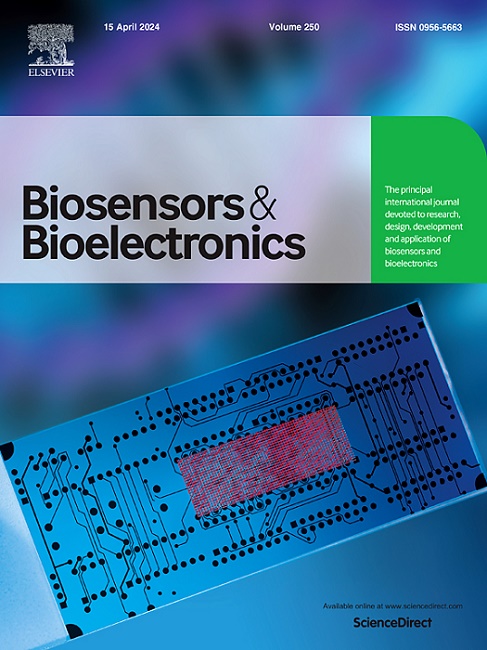Cu2+-encapsulated DNA nanosphere and filter enable sensitive and rapid analysis of miRNA-155
IF 10.7
1区 生物学
Q1 BIOPHYSICS
引用次数: 0
Abstract
MicroRNAs (miRNAs) are critical regulators of gene expression, with aberrant levels linked to diseases such as breast cancer. Notably, they are challenging to detect due to their low abundance in complex sample matrices. In this study, a Cu2⁺-encapsulated DNA nanosphere system capable of homogeneous, enzyme-free, one-pot detection of microRNA-155 (miRNA-155) in human plasma was developed. The system employed self-assembled DNA nanospheres loaded with copper ions as specific recognizers, coupled with a filter membrane-assisted reaction to separate free-Cu2+ from residual components. Moreover, dual quantum dots (QDs) were utilized for signal output, using competitive binding to enhance sensitivity for detecting ultra-low and subtle changes in miRNA levels in complex samples. The method achieved an excellent detection performance, with a limit of detection (LOD) at the low-aM level. Additionally, it demonstrated high specificity in distinguishing between different miRNAs and single nucleotide polymorphisms (SNPs). Validation using 38 clinical plasma samples achieved over 95% accuracy in identifying breast cancer patients, demonstrating 100% sensitivity and approximately 90% clinical consistency compared to imaging, pathology, and quantitative real-time polymerase chain reaction (qRT-PCR). The method required minimal sample pre-treatment and was completed within 1 h. Overall, the developed method offers a reliable tool for breast cancer diagnosis and establishes a mode for extending its application to other biomarkers in the clinical setting.
求助全文
约1分钟内获得全文
求助全文
来源期刊

Biosensors and Bioelectronics
工程技术-电化学
CiteScore
20.80
自引率
7.10%
发文量
1006
审稿时长
29 days
期刊介绍:
Biosensors & Bioelectronics, along with its open access companion journal Biosensors & Bioelectronics: X, is the leading international publication in the field of biosensors and bioelectronics. It covers research, design, development, and application of biosensors, which are analytical devices incorporating biological materials with physicochemical transducers. These devices, including sensors, DNA chips, electronic noses, and lab-on-a-chip, produce digital signals proportional to specific analytes. Examples include immunosensors and enzyme-based biosensors, applied in various fields such as medicine, environmental monitoring, and food industry. The journal also focuses on molecular and supramolecular structures for enhancing device performance.
 求助内容:
求助内容: 应助结果提醒方式:
应助结果提醒方式:


